
Exchange between the two ancient civilisations of India & China has occurred at least since the last 2500 years.
- BC 500-400 - Earliest references to China are contained in Mahabharat which leads us to believe that contact was established between the then Indian & Chinese regions;
- BC 300-250 - Chanakya of the Maurya Empire refers to China;
- BC 150-100 - Zhang Qian, with approval of Emperor Han Yudi, visited India;
- AD 0-100 - Yunnan – Indian settlements found;
- AD 394-414 - Fa Hsien spent two decades travelling to and studying in India;
- AD 450-500 - Ba Tuo, Shaolin Monastery visited to study Buddhism;
- AD 475-550 - Aryabhatta’s astronomy and mathematics went to China;
- AD 600s - Xuanzhang (Hsuen Tsang) visited India, Buddhism develops in China;
- AD 650-700 - I Ching was in India;
- AD 1400-1450 - Zheng He maritime route included Indian ports;
EXCHANGE PROGRAMS DEVELOPED & NURTURED BY THE SCHOOL OF CHINESE LANGUAGE
2008
Yunnan Center for Cultural Learning & Development & The School of Chinese Language


www.ynccld.org; www.zhongwen.in; www.theschool.edu.in;

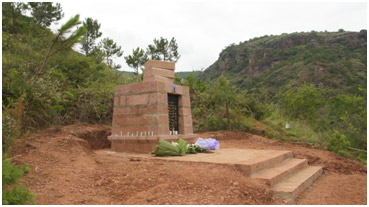
A tribute to Sam Mitchell, with whom the very FIRST Exchange Program was started and, without whom, no Exchange Programs would have started
2010
Kunming Medical University & The School of Chinese Language

www.kmmc.cn/kmmc;http://www.kmmu.edu.cn/kmmc;

www.zhongwen.in; www.theschool.edu.in;
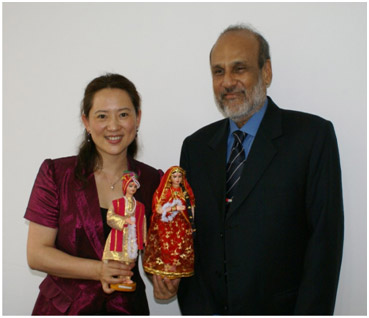
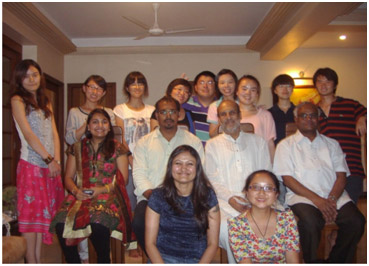
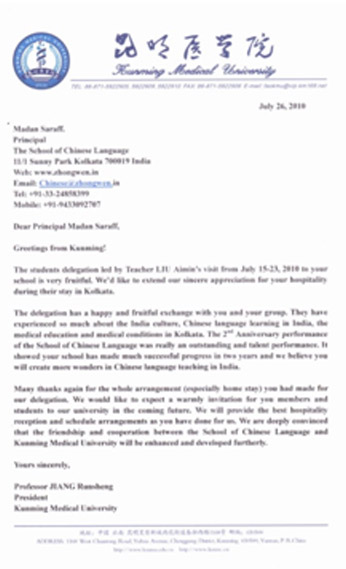
2010
ShidaFuzhong High School affiliated to Yunnan Normal University, St Xavier’s Collegiate School & The School of Chinese Language

www.sxcs.edu.in;

www.sxcs.edu.in;

www.sxcs.edu.in;

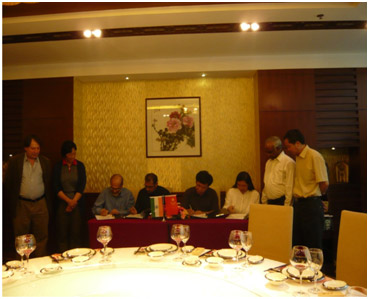
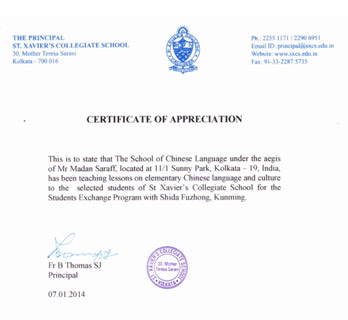
2011
Yunnan Nationalities High School, St Lawrence High School & The School of Chinese Language

www.ynmzzx.net;

www.stlawrencehighschoolkolkata.com;

www.zhongwen.in;
www.theschool.edu.in;
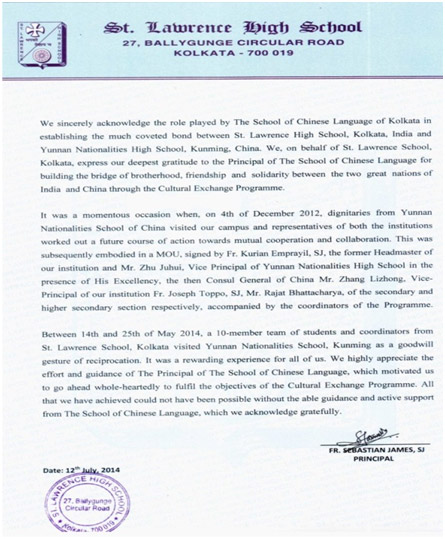
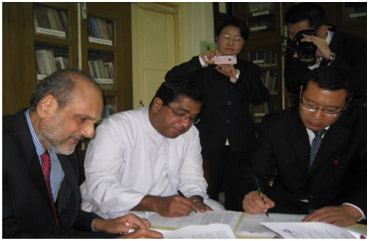
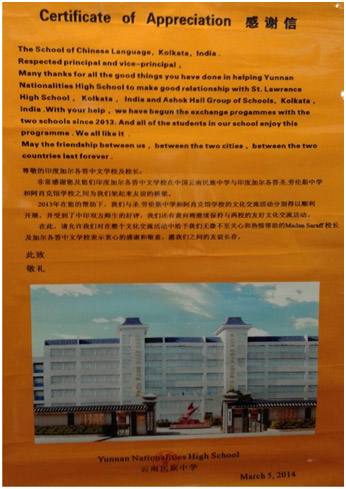
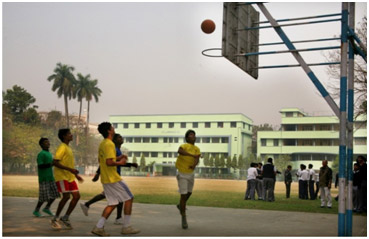
2011
Yunnan Nationalities High School, Ashok Hall Girls’ Higher Secondary School, G D Birla Centre for Education, Mahadevi Birla SishuVihar & The School of Chinese Language

www.ynmzzx.net

www.ashokhall.net

www.zhongwen.in
www.theschool.edu.in
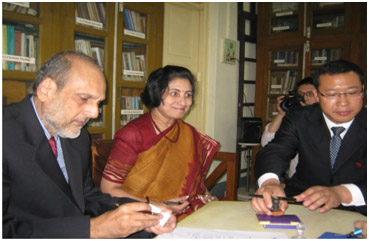

2014
Qinglai School, The BSS School & The School of Chinese Language

www.qlschool.com.cn

www.thebssschool.com

www.stjamesschoolkolkata.com

www.zhongwen.in
www.theschool.edu.in
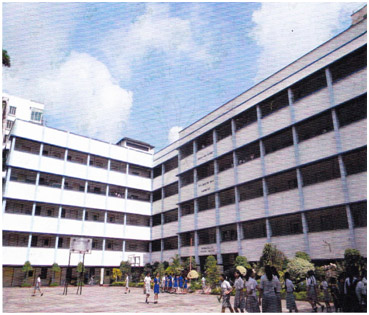
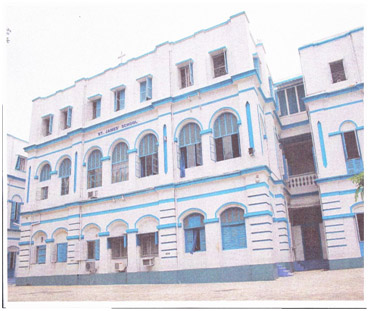
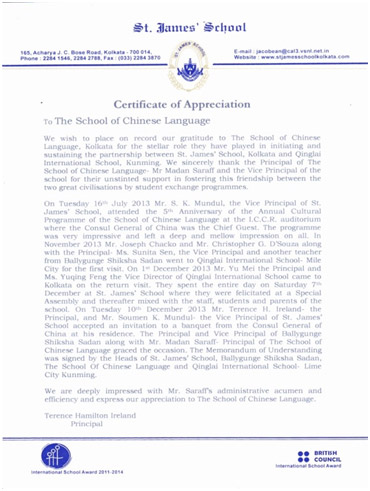
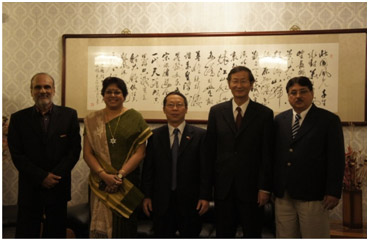
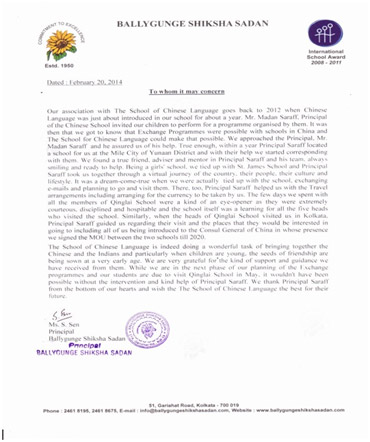
2013
Kunming No. 8 High School, Birla High School, Sushila Birla Girls’ School & The School of Chinese Language

www.km8z.net

www.birlahighschool.com

www.sushilabirlagirlschool.com

www.zhongwen.in
www.theschool.edu.in
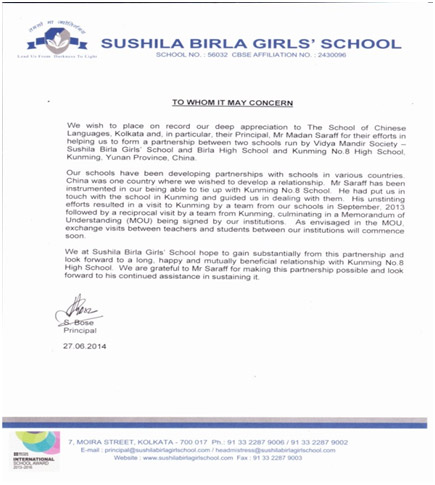



2013
Yunnan Normal University, Calcutta University & The School of Chinese Language

www.caluniv.ac.in

www.ynnu.edu.cn

www.zhongwen.in
www.theschool.edu.in
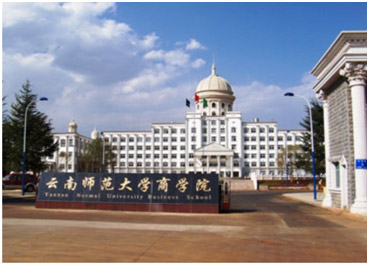
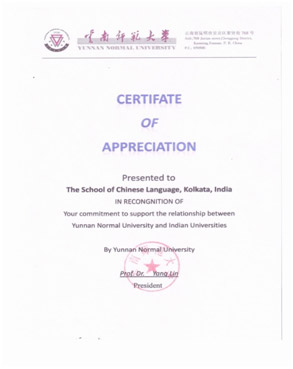
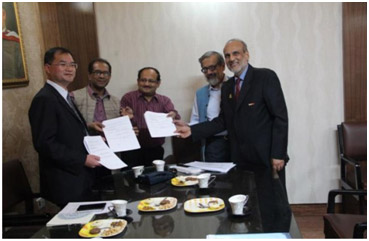
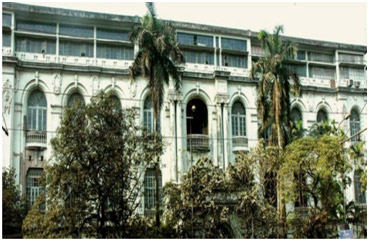
2014
Tsingua SEM, IIM-C & The School of Chinese Language

www.sem.tsinghua.edu.cn
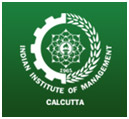
www.iimcal.ac.in

www.zhongwen.in
www.theschool.edu.in
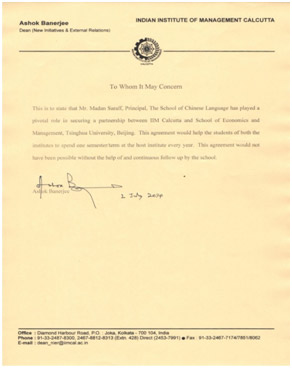
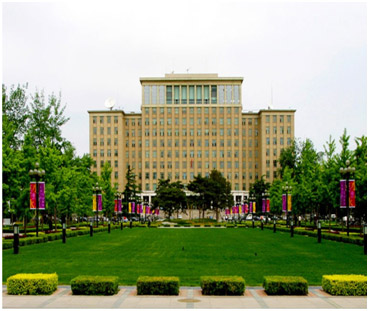
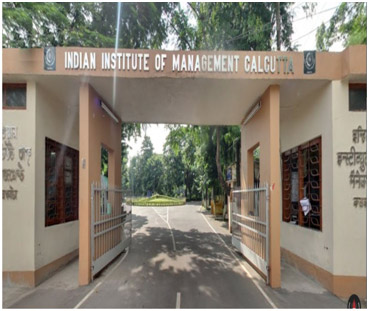
http://mea.gov.in/in-focus-article.htm?22360/India+and+China+Old+Ties+New+Horizons

India and China: Old Ties, New Horizons
October 21, 2013
By Manish Chand
It’s poised to be a unique year in the history of India-China relations.This is the first time in more than five decades the leaders of the two coun-tries would have visited each other’s capitals in the same year,underlining the resolve of the two rising Asian powers to keep their relations on an even keel despite a host of challenges. Last time, the two-way visits in the same year happened in 1954 when the then Indian Prime Minister Jawaharlal Nehru and Chinese Premier Zhou Enlai visited Beijing and New Delhi respectively.
It’s also a unique year in so far as it underlines the triumph of diplomacy over hysteria and rhetorical sabre-rattling. The relations between India and China were put under stress this summer due to issues arising out of an un-demarcated frontier, but thanks to deft diplomacy and a new real-ism in India-China relations, the two giant Asian neighbours went a pace with the daunting task of building bridges and seizing fresh opportunities to impart a fresh momentum to their relationship that promises to bring manifold benefits to their 2.5 billion people.
This multi-faceted relationship, bristling with promises and challenges,will be in focus when India’s Prime Minister Manmohan Singh will be in Beijing Oct 22-24. The visit will build upon substantive outcomes of Chinese Premier Li Keqiang’s trip to New Delhi May 19-21 that saw the two sides sign eight pacts… Premier Li’s trip to New Delhi, the first overseas destination chosen by the Chinese premier after taking charge of Asia’s largest economy, was designed to send the message that China’s new leadership was resolved to carry forward the momentum in bilateral ties which have been steadily and incrementally transformed over the years.
Partners, not rivals
Defying the construction of India and China as rivals and competitors,the last decade has seen seven two-way visits by the leaders of the two countries. The visits included: Prime Minister Atal Behari Vajpayee (2003),Premier Wen Jiabao (2005, 2010), President Hu Jintao [2006), Prime Minister Manmohan Singh (2008) and Premier Li Keqiang (2013). There were also two visits linked to BRICS summits: Manmohan Singh visited Sanya, China in 2011and President Hu travelled to New Delhi in 2012 and one visit to Beijing for the ASEM Summit in October 2008.
Milestones
There were defining milestones along the way, which telescoped multi-pronged acceleration in bilateral ties. The two countries established a new mechanism of special representatives to resolve the boundary dispute during Vajpayee’s visit in 2003 and took a pivotal step to firm up guiding principles and political parameters to resolve this decades-old issue from the higher strategic vision of their relations in the 21st century. The spe-cial representatives have held 16 rounds of talks and are currently in Stage II of the negotiations, which entails reaching a mutually agreed frame-work to demarcate the boundary.
Peace Dividend
The boundary dispute and differences over some issues did not, however,prevent the two rising stars on the global stage for setting new bench-marks for their economic ties. Bilateral trade has soared from merely $3 billion in 2000 to over $70 billion in 2012. During the visit of Chinese Premier Wen to India in December 2010, the two sides jointly set a bilateral trade target of US$ 100 billion for 2015, and latest reports suggest they are on course to achieve this important milestone.
Taking a long-range view, the two countries have also launched a strategic economic dialogue for coordination on macro-economic issues and the sharing of relevant developmental experiences in eradicating poverty and creating sustainable urbanisation.
In the military sphere, the two Asian powers are now looking to build greater trust and intensify interaction between their top military brass.India and China held their first counter-terror exercise entitled‘Hand-to-Hand’ in Kunming in 2010 and are poised to hold another round later next year. The defence ministers of the two countries have Met several times including earlier this year and are looking for new ways forenhanced military-to-military interaction.
New model of India-China ties
Against this backdrop, India and China have over the years forged a new model of relationship between the two ancient civilisations and rising Asian powers. This model envisages a multi-track approach of engagement which entails not letting complex issues like the boundary question affect progress in other critical areas of bilateral relations like trade and investment and closer cooperation in the international arena. Currently,the two countries have established numerous dialogue mechanisms straddling diverse sectors.
In the international area, India and China have banded together on issue-based coalitions on a host of cross-cutting issues. Their coordination and consultation in international climate change negotiation shave been instrumental in protecting the interests of developing countries. In multilateral fora like BRICS, India and China speak in the same voice on resolving difficult issues like Iran and Syria through dialogue and diplomacy.
Culture and Creativity
With so much at stake in building a cooperative relationship, India and China are now looking to enhance people-to-people contacts and leverage their cultural ties going back centuries to provide greater popular support for their relationship. From the spread of Buddhism to China a few cen-turies ago and the popularity of Bollywood films like Three Idiots in China more recent times, there has been a constant cultural intermingling over the centuries. And Chinese food, Calligraphy and the Chinese language are finding new devotees in India every day.
The Road Ahead: Challenges
This picture of mutually assuring cooperation should not, however, lullus into complacency: there are challenges and landmines ahead if some of the sensitive issues are not handled properly. First and foremost, the two countries must prioritise maintaining peace and tranquillity along the border. From India’s point of view, this is of ut-most importance as incursions, arising out of un-delineated frontier,fuel suspicions and deprives the relationship of the much-needed public sup-port. Against this backdrop, the ongoing efforts to sign a Border Defence Cooperation Agreement during Manmohan Singh’s visit to China could prove to be a game-changer. The border defence pact seeks to coalesce the existing confidence-building measures along the Line of Actual Control under an umbrella agreement that will also provide for additional measures like intensifying interactions between border personnel to avert any crisis triggered by incursions. Secondly, the issue of widening trade imbalance needs to be addressed upfront. India is hoping that China will unveil some concrete steps at the forthcoming talks that will create a degree of equilibrium in the economic relationship. If China goes ahead with granting access to Indian IT and pharma companies, that will have a cascading effect on economic ties. On the economic front, there are some positive developments: China looks poised to scale up investment in India and participate in special business parks.
Thirdly, India and China should build upon the sub-regional dialogues they have launched on West Asia, Africa and Central Asia.
Fourth, there is the challenge of minimising misunderstandings and building stronger public support for scaling up this relationship.Clearly, there is a lot going on for the two Asian neighbours, but sadly this is not reflected in media projection, which tends to portray the two countries as rivals and competitors. Building knowledge and information bridge is the way to go. With this vision on mind, senior journalists and opinion-makers held their first media forum in New Delhi September 16 and firmed up a road map for enhanced interaction and conversation between the media of the two countries. The focus was on clearing misperceptions and building a more conducive atmosphere for the bilateral relationship.
With such pioneering initiatives, the two countries are headed for a more constructive and rounded relationship in the future. The visits by the Chinese premier to India in May and the Indian prime minister to Beijing Oct 23-24 are expected to reaffirm a soaring vision of an Asian century which is marked by close cooperative relations between the two Asian giants. As India’s Prime Minister Manmohan Singh has been stressing re-lentlessly, there is enough room for India and China to growth together in a renascent Asia. Can the leaders of India and China seize the initiative and unfurl the dreams of their two and a half billion people?Only time will tell, but going by recent trends India and China are heading for more interesting times, as they create a new model of peace fulco-existence and co-prosperity.
The views expressed are personal views of the author
(Manish Chand is Editor-in-Chief of India Writes, www.indiawrites.org, an online magazine and journal focused on international affairs, emerging powers, China and Africa).
References:
- Joint Statement on the State Visit of Chinese Premier Li Keqiang to India
- List of documents signed during the State Visit of Chinese Premier LiKeqiang to India (May 19-22, 2013)
- A Shared Vision for the 21st Century of the Republic of India and the People's Republic of China, January 14, 2008
- India-China relations: Old ties, new model? (By S. Jaishankar)
- Welcome to "the new normal” in India-China ties
- Address by External Affairs Minister during inauguration of India-China Media Forum (September 16, 2013)
- Foreign Secretary’s speech at the conclusion of India-China Media Forum(September 16, 2013)
The School of Chinese Language in Kolkata writes:
The declaration by the Leaders of India & China - that 2014 is the Year of Understanding - must be honoured by each and every one of us; that is the only way trueunderstanding and friendship can be achieved. The School of Chinese Language in Kolkata is proud to have developed and nurtured Student Exchange Programs between Indian & Chinese high schools and between Calcutta University & Yunnan Normal University as well as IIM-C & Tsinghua University. Let us all join hands to bring peace and prosperity between our nations! Let us make the dreams of the-peoples of China & India come true!
|
Home |
Intro |
HSK |
Why |
can do |
You can do |
Services |
Festivals |
What is upto! |
MBBS | Joint Certificate-Calcutta University! | Our Exchange Programs | Links | Contact Us |
|
| © Zhong Wen Xue Xiao | The School of Chinese Language 2012 - 2020 | Designed and Developed by: dharma.h |